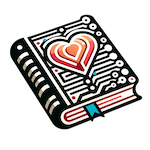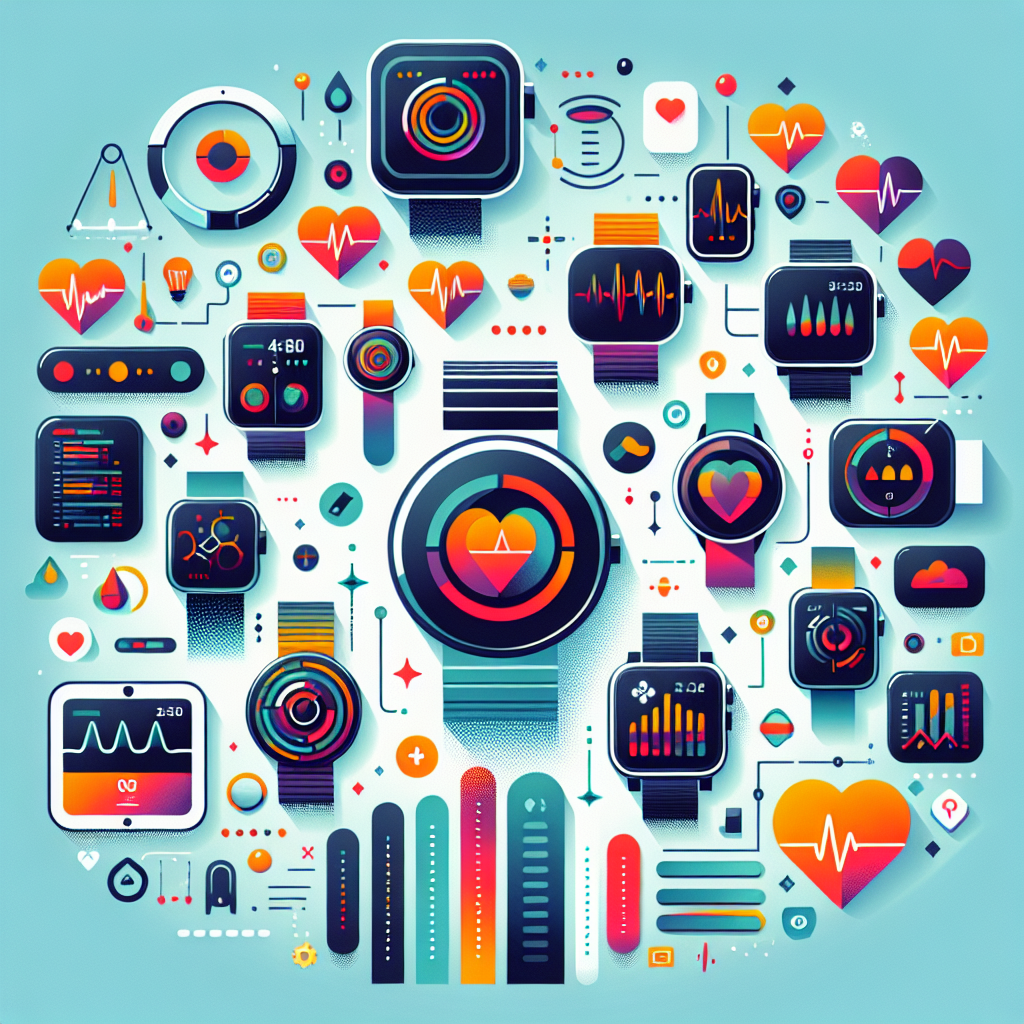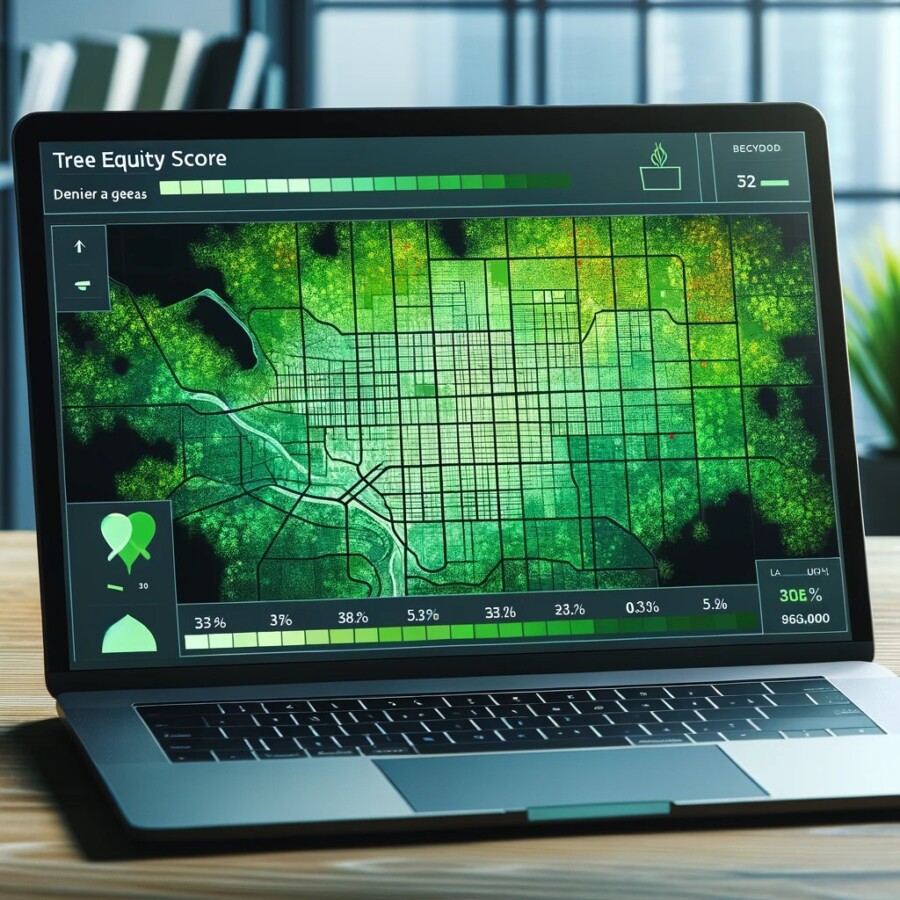Wearable technology, particularly smartwatches and rings, has become a significant industry focused on health tracking. These devices claim to monitor various health metrics, including heart rate, sleep patterns, and even menstrual cycles. Recently, UK Health Secretary Wes Streeting proposed distributing wearables to millions of NHS patients to help them track symptoms related to treatments, such as those for cancer. Despite the potential benefits, many healthcare professionals express skepticism about the reliability and usefulness of the data generated by these devices.
One personal experience illustrates the potential of wearables. A user reported that their smart ring detected an elevated temperature and restless sleep, suggesting they might be getting sick. Although the user initially dismissed the warning, they later fell ill with gastric flu. This raises an important question: could the data from wearables assist healthcare providers in diagnosing and treating patients? Some brands, like Oura, allow users to share their health data with doctors, but opinions on the practicality of this data vary among medical professionals.
Dr. Jake Deutsch, a clinician who advises Oura, believes that wearable data can enhance health assessments. However, Dr. Helen Salisbury, a general practitioner in Oxford, cautions against over-reliance on these devices. She notes that while some patients are beginning to bring their wearables to appointments, the data they provide may not always be useful. Dr. Salisbury worries that the prevalence of wearables could lead to increased anxiety about health, as patients may feel compelled to seek medical attention for minor fluctuations in their data.
The accuracy of wearable technology is another concern. Dr. Yang Wei, an associate professor in wearable technologies, explains that many factors can affect the reliability of data collected by these devices. For instance, wearables may not continuously monitor vital signs due to battery constraints, and movement can create noise in the data. Furthermore, there is currently no international standard for the sensors and software used in wearables, which can lead to inconsistencies in data quality.
Despite the challenges, there is potential for integrating wearable data into healthcare systems. Pritesh Mistry from the Kings Fund highlights the need for a robust technological infrastructure to support this integration. While wearables could play a role in shifting care from hospitals to community settings, the current lack of standardization and the need for trained healthcare professionals to interpret the data present significant hurdles. As the conversation around wearables continues, it remains crucial to balance their benefits with the need for accurate and reliable health monitoring.
Original news source: Why are doctors wary of wearables? (BBC)
🎧 Listen:
Slow
Normal
Fast
📖 Vocabulary:
| 1 | skepticism | Doubt or disbelief regarding the truth or effectiveness of something |
| 2 | metrics | Measurements or standards used to evaluate or assess something |
| 3 | diagnosing | Identifying a disease or condition from its signs and symptoms |
| 4 | prevalence | The widespread occurrence or acceptance of something |
| 5 | fluctuations | Variations or changes in level, amount, or condition |
| 6 | constraints | Limitations or restrictions that affect performance or function |
| 7 | inconsistencies | Lack of uniformity or consistency |
| 8 | infrastructure | The basic physical and organizational structures needed for operation |
| 9 | integration | The process of combining or incorporating into a larger system |
| 10 | standardization | The process of making something conform to a standard |
| 11 | compelled | Forced or obliged to do something |
| 12 | robust | Strong and healthy; able to withstand or overcome adverse conditions |
| 13 | anxiety | A feeling of worry, nervousness, or unease |
| 14 | reliability | The quality of being trustworthy or dependable |
| 15 | potential | The capacity to develop or succeed in the future |
Group or Classroom Activities
Warm-up Activities:
– CHARADES
Instructions: Students will act out different wearable technology devices (e.g., smartwatches, smart rings) and health-related activities (e.g., monitoring heart rate, tracking sleep) without speaking. Their classmates will guess what they are portraying. This activity encourages vocabulary recall and enhances understanding of the topic.
– OPINION POLL
Instructions: Students will be divided into small groups and discuss their opinions on the effectiveness and reliability of wearable technology in health tracking. Each group will create a short poll with questions to survey the rest of the class. After collecting responses, groups will present their findings and discuss any differences in opinion.
– MIND MAP
Instructions: In pairs, students will create a mind map on a large piece of paper or a digital platform that visually represents the pros and cons of wearable technology in healthcare. They should include points from the article and their own thoughts. Afterward, each pair will present their mind map to the class.
– FUTURE PREDICTIONS
Instructions: Each student will take a turn making predictions about how wearable technology will evolve in the next five years concerning healthcare. They should consider advancements in technology, potential regulations, or societal changes. After sharing their predictions, the class can discuss the feasibility and implications of these ideas.
– SPEED SUMMARIZING
Instructions: In a timed format, each student will summarize a specific section of the article (e.g., benefits, concerns, expert opinions) to a partner in one minute. After a minute, they will switch roles. This activity helps improve summarization skills and encourages active listening as students share their understanding of the text.
🤔 Comprehension Questions:
1. What health metrics do wearable devices claim to monitor?
2. What proposal did UK Health Secretary Wes Streeting make regarding wearables for NHS patients?
3. How did a user’s personal experience with a smart ring illustrate the potential of wearables?
4. What concerns does Dr. Helen Salisbury express regarding the use of wearable data in medical appointments?
5. What factors can affect the accuracy of data collected by wearable devices, according to Dr. Yang Wei?
6. What is Pritesh Mistry’s perspective on the integration of wearable data into healthcare systems?
7. Why is there a need for international standards in wearable technology, as mentioned in the article?
8. How might the prevalence of wearables influence patients’ anxiety about their health, according to Dr. Salisbury?
Go to answers ⇩
🎧✍️ Listen and Fill in the Gaps:
Wearable technology, particularly smartwatches and rings, has become a significant industry focused on health tracking. These devices claim to monitor various health metrics, including heart rate, sleep (1)______, and even (2)______ cycles. Recently, UK Health Secretary Wes Streeting (3)______ distributing wearables to millions of NHS patients to help them track (4)______ related to treatments, such as those for cancer. Despite the potential benefits, many healthcare professionals express skepticism about the reliability and usefulness of the data generated by these devices.
One personal experience illustrates the potential of wearables. A user reported that their smart ring detected an elevated temperature and (5)______ sleep, suggesting they might be getting sick. Although the user initially dismissed the (6)______, they later fell ill with gastric flu. This raises an important question: could the data from (7)______s assist (8)______ providers in diagnosing and treating patients? Some brands, like Oura, allow users to share their health data with doctors, but opinions on the practicality of this data vary among medical professionals.
Dr. Jake Deutsch, a clinician who advises Oura, believes that wearable data can enhance health assessments. However, Dr. Helen Salisbury, a general practitioner in Oxford, cautions against over-reliance on these devices. She notes that while some patients are beginning to bring their wearables to appointments, the data they provide may not always be (9)______. Dr. Salisbury worries that the prevalence of wearables could lead to increased anxiety about (10)______, as patients may feel compelled to seek medical attention for minor fluctuations in their data.
The accuracy of wearable technology is another concern. Dr. Yang Wei, an associate (11)______ in wearable technologies, explains that many factors can affect the reliability of data collected by these (12)______. For instance, wearables may not continuously monitor vital signs due to battery constraints, and movement can create noise in the data. Furthermore, there is currently no international standard for the sensors and software used in (13)______, which can lead to inconsistencies in data quality.
Despite the challenges, there is potential for integrating wearable data into healthcare systems. Pritesh Mistry from the Kings Fund highlights the need for a (14)______ technological infrastructure to support this integration. While wearables could play a role in shifting care from (15)______ to community settings, the current lack of standardization and the need for (16)______ healthcare professionals to interpret the data present significant hurdles. As the conversation around wearables continues, it remains crucial to balance their benefits with the need for accurate and reliable health monitoring.
Go to answers ⇩
💬 Discussion Questions:
Students can ask a partner these questions, or discuss them as a group.
1. What is your opinion on the use of wearable technology for health tracking?
2. How would you feel if your doctor recommended that you use a wearable device to monitor your health?
3. Do you think wearable technology can replace traditional medical assessments? Why or why not?
4. Have you ever used a wearable device? If so, what was your experience?
5. What is a health metric that you think is most important to track with wearable technology?
6. How do you think the introduction of wearables could change the way we approach health and wellness?
7. Do you like the idea of sharing your health data with your doctor through wearable devices? Why or why not?
8. How would you feel if you received alerts from your wearable device about potential health issues?
9. Do you think the potential anxiety caused by wearable data is a valid concern? Why or why not?
10. What is a challenge you foresee in integrating wearable technology into healthcare systems?
11. How would you respond if a friend or family member became overly worried about their health data from a wearable device?
12. Do you think that the accuracy of wearable technology will improve in the future? Why or why not?
13. What is a benefit of using wearable technology that you believe is often overlooked?
14. How do you think healthcare professionals should be trained to interpret data from wearable devices?
15. Do you believe that there should be international standards for wearable technology? Why or why not?
Individual Activities
📖💭 Vocabulary Meanings:
Match each word to its meaning.
Words:
1. skepticism
2. metrics
3. diagnosing
4. prevalence
5. fluctuations
6. constraints
7. inconsistencies
8. infrastructure
9. integration
10. standardization
11. compelled
12. robust
13. anxiety
14. reliability
15. potential
Meanings:
(A) The capacity to develop or succeed in the future
(B) Strong and healthy; able to withstand or overcome adverse conditions
(C) The process of combining or incorporating into a larger system
(D) Doubt or disbelief regarding the truth or effectiveness of something
(E) Measurements or standards used to evaluate or assess something
(F) Lack of uniformity or consistency
(G) Variations or changes in level, amount, or condition
(H) The process of making something conform to a standard
(I) Limitations or restrictions that affect performance or function
(J) Forced or obliged to do something
(K) The widespread occurrence or acceptance of something
(L) The quality of being trustworthy or dependable
(M) The basic physical and organizational structures needed for operation
(N) A feeling of worry, nervousness, or unease
(O) Identifying a disease or condition from its signs and symptoms
Go to answers ⇩
🔡 Multiple Choice Questions:
1. What is the primary focus of the wearable technology industry mentioned in the article?
(a) Fashion design
(b) Entertainment
(c) Communication
(d) Health tracking
2. Who proposed distributing wearables to NHS patients to track symptoms?
(a) Dr. Jake Deutsch
(b) Dr. Helen Salisbury
(c) Wes Streeting
(d) Pritesh Mistry
3. What health metrics do wearable devices claim to monitor?
(a) Heart rate
(b) Sleep patterns
(c) Menstrual cycles
(d) All of the above
4. What concern does Dr. Helen Salisbury express regarding wearable technology?
(a) High cost of wearables
(b) Lack of user interest
(c) Over-reliance on these devices
(d) Incompatibility with smartphones
5. What did a user’s smart ring detect that indicated they might be getting sick?
(a) Low battery
(b) Elevated temperature
(c) High blood pressure
(d) Increased heart rate
6. What is a significant challenge mentioned regarding the accuracy of wearable technology?
(a) Lack of international standards
(b) High manufacturing costs
(c) Limited battery life
(d) Poor design
7. According to Pritesh Mistry, what is necessary for integrating wearable data into healthcare systems?
(a) More marketing strategies
(b) Robust technological infrastructure
(c) Increased production of wearables
(d) Wider consumer adoption
8. What potential issue does Dr. Salisbury highlight about patients using wearables?
(a) Decreased physical activity
(b) Higher healthcare costs
(c) Reduced doctor-patient communication
(d) Increased anxiety about health
Go to answers ⇩
🕵️ True or False Questions:
1. The accuracy of wearable technology is doubted due to issues like battery limitations and movement influencing data reliability.
2. Dr. Jake Deutsch believes that wearable data can enhance health assessments, while Dr. Helen Salisbury cautions against over-reliance on these devices.
3. There is currently no global standard for the sensors and software utilized in wearable devices, resulting in disparities in data quality.
4. Pritesh Mistry emphasizes the need for a robust technological infrastructure to integrate wearable data into healthcare systems.
5. A user claimed that their smart ring identified a high temperature and disturbed sleep before they became sick with gastric flu.
6. UK Health Secretary Wes Streeting proposed distributing wearables to millions of NHS patients for symptom tracking related to treatments.
7. Certain healthcare professionals have doubts about the reliability and utility of data produced by wearable devices.
8. Wearable technology, such as smartwatches and rings, is primarily focused on health tracking.
Go to answers ⇩
📝 Write a Summary:
Write a summary of this news article in two sentences.
Check your writing now with the best free AI for English writing!
Writing Questions:
Answer the following questions. Write as much as you can for each answer.
Check your answers with our free English writing assistant!
1. What are some of the health metrics that wearable technology claims to monitor?
2. How did a user’s experience with a smart ring illustrate the potential benefits of wearable technology?
3. What concerns do healthcare professionals have regarding the reliability of data generated by wearable devices?
4. Why is the lack of international standards for wearable technology a significant issue in healthcare?
5. What are the potential benefits and challenges of integrating wearable data into healthcare systems, according to experts?
✅ Answers
🤔✅ Comprehension Question Answers:
1. What health metrics do wearable devices claim to monitor?
Wearable devices claim to monitor various health metrics, including heart rate, sleep patterns, and menstrual cycles.
2. What proposal did UK Health Secretary Wes Streeting make regarding wearables for NHS patients?
UK Health Secretary Wes Streeting proposed distributing wearables to millions of NHS patients to help them track symptoms related to treatments, such as those for cancer.
3. How did a user’s personal experience with a smart ring illustrate the potential of wearables?
A user reported that their smart ring detected an elevated temperature and restless sleep, suggesting they might be getting sick. Although they initially dismissed the warning, they later fell ill with gastric flu, demonstrating the potential for wearables to assist in health monitoring.
4. What concerns does Dr. Helen Salisbury express regarding the use of wearable data in medical appointments?
Dr. Helen Salisbury expresses concern that while some patients are bringing their wearables to appointments, the data may not always be useful and could lead to increased anxiety about health, as patients might feel compelled to seek medical attention for minor fluctuations in their data.
5. What factors can affect the accuracy of data collected by wearable devices, according to Dr. Yang Wei?
Factors that can affect the accuracy of data include battery constraints that limit continuous monitoring of vital signs, movement that can create noise in the data, and the lack of international standards for sensors and software used in wearables, leading to inconsistencies in data quality.
6. What is Pritesh Mistry’s perspective on the integration of wearable data into healthcare systems?
Pritesh Mistry highlights the need for a robust technological infrastructure to support the integration of wearable data into healthcare systems and notes that while wearables could help shift care from hospitals to community settings, there are significant hurdles due to the lack of standardization and the need for trained healthcare professionals to interpret the data.
7. Why is there a need for international standards in wearable technology, as mentioned in the article?
There is a need for international standards in wearable technology to ensure consistency in data quality and reliability, as the current lack of standardization can lead to discrepancies in the data collected by different devices.
8. How might the prevalence of wearables influence patients’ anxiety about their health, according to Dr. Salisbury?
Dr. Salisbury suggests that the prevalence of wearables could lead to increased anxiety about health, as patients may feel compelled to seek medical attention for minor fluctuations in their wearable data.
Go back to questions ⇧
🎧✍️✅ Listen and Fill in the Gaps Answers:
(1) patterns
(2) menstrual
(3) proposed
(4) symptoms
(5) restless
(6) warning
(7) wearable
(8) healthcare
(9) useful
(10) health
(11) professor
(12) devices
(13) wearables
(14) robust
(15) hospitals
(16) trained
Go back to questions ⇧
📖💭✅ Vocabulary Meanings Answers:
1. skepticism
Answer: (D) Doubt or disbelief regarding the truth or effectiveness of something
2. metrics
Answer: (E) Measurements or standards used to evaluate or assess something
3. diagnosing
Answer: (O) Identifying a disease or condition from its signs and symptoms
4. prevalence
Answer: (K) The widespread occurrence or acceptance of something
5. fluctuations
Answer: (G) Variations or changes in level, amount, or condition
6. constraints
Answer: (I) Limitations or restrictions that affect performance or function
7. inconsistencies
Answer: (F) Lack of uniformity or consistency
8. infrastructure
Answer: (M) The basic physical and organizational structures needed for operation
9. integration
Answer: (C) The process of combining or incorporating into a larger system
10. standardization
Answer: (H) The process of making something conform to a standard
11. compelled
Answer: (J) Forced or obliged to do something
12. robust
Answer: (B) Strong and healthy; able to withstand or overcome adverse conditions
13. anxiety
Answer: (N) A feeling of worry, nervousness, or unease
14. reliability
Answer: (L) The quality of being trustworthy or dependable
15. potential
Answer: (A) The capacity to develop or succeed in the future
Go back to questions ⇧
🔡✅ Multiple Choice Answers:
1. What is the primary focus of the wearable technology industry mentioned in the article?
Answer: (d) Health tracking
2. Who proposed distributing wearables to NHS patients to track symptoms?
Answer: (c) Wes Streeting
3. What health metrics do wearable devices claim to monitor?
Answer: (a) Heart rate
4. What concern does Dr. Helen Salisbury express regarding wearable technology?
Answer: (c) Over-reliance on these devices
5. What did a user’s smart ring detect that indicated they might be getting sick?
Answer: (b) Elevated temperature
6. What is a significant challenge mentioned regarding the accuracy of wearable technology?
Answer: (a) Lack of international standards
7. According to Pritesh Mistry, what is necessary for integrating wearable data into healthcare systems?
Answer: (b) Robust technological infrastructure
8. What potential issue does Dr. Salisbury highlight about patients using wearables?
Answer: (d) Increased anxiety about health
Go back to questions ⇧
🕵️✅ True or False Answers:
1. The accuracy of wearable technology is doubted due to issues like battery limitations and movement influencing data reliability. (Answer: False)
2. Dr. Jake Deutsch believes that wearable data can enhance health assessments, while Dr. Helen Salisbury cautions against over-reliance on these devices. (Answer: True)
3. There is currently no global standard for the sensors and software utilized in wearable devices, resulting in disparities in data quality. (Answer: False)
4. Pritesh Mistry emphasizes the need for a robust technological infrastructure to integrate wearable data into healthcare systems. (Answer: True)
5. A user claimed that their smart ring identified a high temperature and disturbed sleep before they became sick with gastric flu. (Answer: False)
6. UK Health Secretary Wes Streeting proposed distributing wearables to millions of NHS patients for symptom tracking related to treatments. (Answer: True)
7. Certain healthcare professionals have doubts about the reliability and utility of data produced by wearable devices. (Answer: False)
8. Wearable technology, such as smartwatches and rings, is primarily focused on health tracking. (Answer: True)
Go back to questions ⇧













